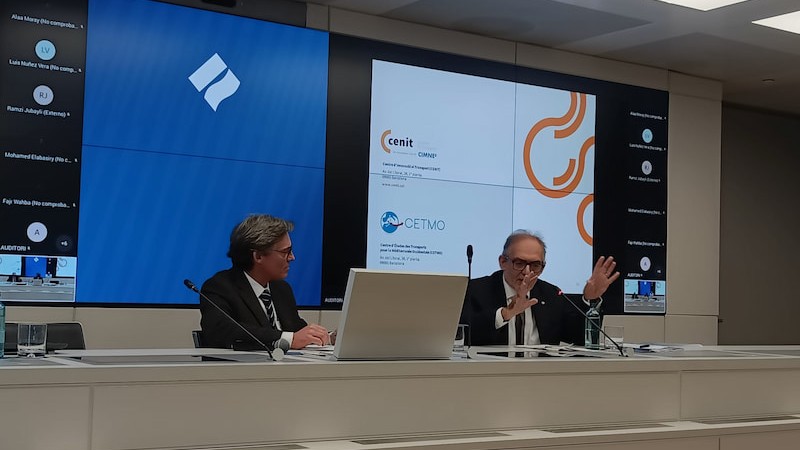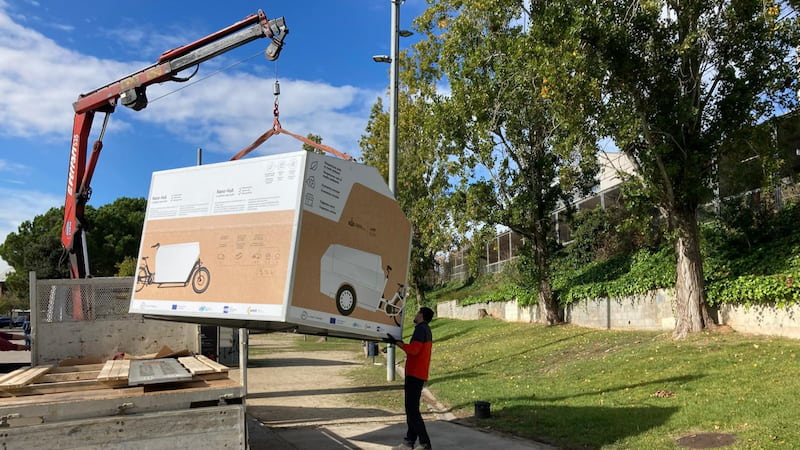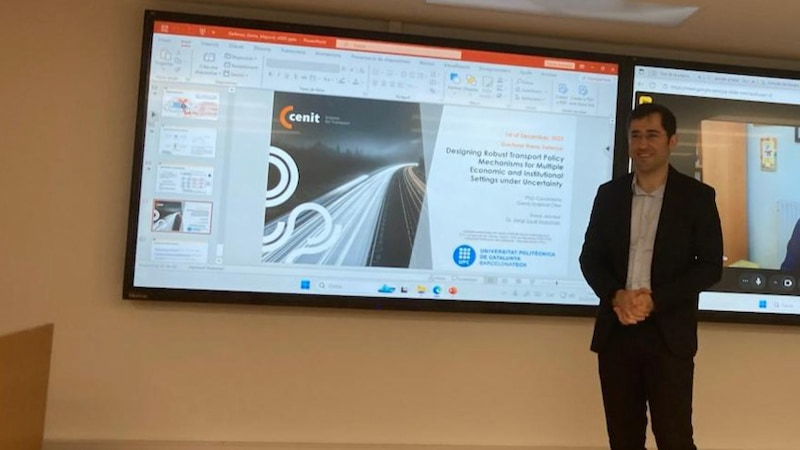Dealing with sustainable mobility challenges is no easy task: from technological barriers to physical and infrastructure constraints, the evolution of urban transport is as complex as it is inevitable. The Turkish capital city of Ankara decided to address this multifaceted challenge head-on through the Sustainable Mobility Plan for Ankara (SMART Ankara), supported by European funds for neighbouring regions (IPA).
CENIT, CIMNE’s Innovation Unit in Transport, participates in the SMART Ankara initiative by developing an activity-based transport simulation model. This solution will support the evaluation and definition of the most appropriate sustainable mobility measures to redefine how dwellers and visitors move in the Turkish capital, a city of more than 5 million inhabitants which has historically prioritised private automobiles.
Ankara, with a surface area of 25,437 km2 as of 2019, is the second most populous province of Turkey with 5,639,076 inhabitants. The population of Ankara has increased linearly by 19% in the last decade due to internal migration and the mobility of refugees. The centre of the city has 25 districts where universities, technology development centres, organized industrial zones, powerful sector clusters, high-level bureaucracy, international institutions and non-governmental organizations are concentrated. Transportation policy in Ankara, in the previous years, was focused on traffic management and targeted continuous flow of traffic especially for private cars.
In this context, the main objective of the SMART Ankara project is to prepare a Sustainable Urban Mobility Plan (SUMP) for the city in accordance with the best EU practices and standards. In addition, it aims to support development of a Smart Bike System (SBS) for the city. In this sense, the project consists of 6 differentiated components.
The project is led by DAI Europe, and completed with a technical team of international and local experts. CIMNE, is part of the consortium working on travel demand modelling, digital solutions and capacity building through its innovation unit in transport, CENIT.

Figure 1. Ankara city. Source: Pixabay
Phases and deliverables
The process begins with an extensive analysis and data collection phase (Component 1) to establish the planning framework for Ankara’s SUMP, involving stakeholders and citizens at every step. Experts evaluated the current mobility situation in Ankara through the revision of existing socioeconomic and mobility data, as well as planning practices and legal conditions. This effort involved a specific household mobility survey, with a sample of more than 25,000 households, more than 100 traffic counts, and specific public transport surveys, stated preferences, parking, and other cordon surveys specifically tailored to Ankara's needs. The collected data feeds the development of an activity-based travel demand model for Ankara.
These types of models have been gradually implemented in the last decade, with only a few working examples worldwide (mainly in the United States). Some elements of mobility that advance towards more intricate models are complexity in travel patterns (assessment of 24-hour mobility patterns, teleworking, joint trips, etc.) or the growing intricacy of transport policies (pricing strategies, urban tolls, equity and gender analyses, policies for specific population segments, etc.).
Researchers worked with the software AcitivtySim integrated with PTV VISUM to implement the activity-based model. The structure of the model (figure 2) consists of one ActivitySim component (1) and two PTV VISUM components (2, 3). ActivitySim, which is an open platform software from the AMPO Research Foundation in the United States, has been used to create activity-based models internationally, though most implementations have taken place in America. The activity-based model starts from a donor model based in San Francisco and applied to the Turkish capital, calculating various sub-models, from the production of a synthetic population, to the estimation of long-term choices such as car ownership to further predict travel demand for the various transportation modes. The demand estimated from component 1 is then fed into PTV VISUM and assigned to the Ankara transportation network to visualize macroscopic trends for the region. Component 3, also through PTV VISUM, completes the visualization of Ankara transportation by including freight transport and through-traffic which utilizes regional rights of way.

Figure 2. Transport model architecture developed for Ankara.

Figure 3. Screenshot of the private vehicle flows in Ankara’s road network.
Component 1 is extended with tailor-made digital solutions based on ongoing challenges occurring in Ankara. Issues related to parking, data availability, and shared mobility management are comprehensively addressed and appropriate solutions are crafted and proposed accordingly. Leveraging CENIT’s experience of knitting digital solutions together, this project performs benchmarking of solutions implemented in numerous cities backed with solid financing and governance models. By embracing the Theory of Change (ToC), a methodology that outlines how and why desired changes are expected to happen in a particular context, CIMNE researchers ensured that each solution has a meaningful impact and answers emerging challenges in Ankara.

Figure 4. Theory of Change of Mobility as a Service as a smart mobility solution.
Components 2 and 3 focus on the development of the SUMP strategy, where the vision, objectives, and goals are defined, as well as the measures to be implemented for the SUMP. In parallel, components 4 and 5 address training and capacity building as well as publicity and visibility, respectively.
Component 4 consists of more than 20 training sessions and workshops, whose aim is to strengthen the transport planning staff of AMM – EGO (Ankara Metropolitan Municipality and Public Transport Agency), providing the team with the skills and knowledge necessary to successfully carry out and sustain the project over time. In this area, CENIT has prepared and conducted 5 two-day training sessions as well as two workshops for more than 200 participants. The topics ranged from resilient cities and transport systems, innovative concepts in “smart cities,” analytical models for SUMPs (transport models, risk prediction and assessment), intelligent transport systems, or the integration of SUMPs at the metropolitan level.
The objective of Component 5, publicity and visibility, is to connect with the general public and citizens of Ankara to increase awareness of sustainable mobility practices. Finally, the project also provides support for the development of an intelligent bike-sharing system (SBS) for Ankara (Component 6).
All in all, the SMART Ankara project is poised to revolutionize sustainable mobility in Ankara by laying a comprehensive framework for eco-friendly transportation solutions and leveraging state of the art travel demand modelling developed at CIMNE. The initiative is already influencing public attitudes, fostering a a greater appreciation for sustainable mobility practices among the city's residents and local government officials.
Funding
Financial support for the SMART Ankara project comes from the Transport Sectoral Operational Programme (SOPT), a major instrument for providing the financial assistance of the European Union to the transport sector in Turkey. The general objective of SOPT (2014-2020) is to contribute to Turkey EU integration with economic and social development by providing a competitive, accessible and sustainable transport system in accordance with EU standards. It is expected that a preparation and implementation of Sustainable Urban Mobility Plans (SUMPs) will bring a new transport planning perspective to Turkish cities in line with EU policies, among which the Capital is found.
Adapted from an original article at the CENIT Magazine #3 by Mulia Pasaribu, Tomás Henriquez and Genís Majoral.








